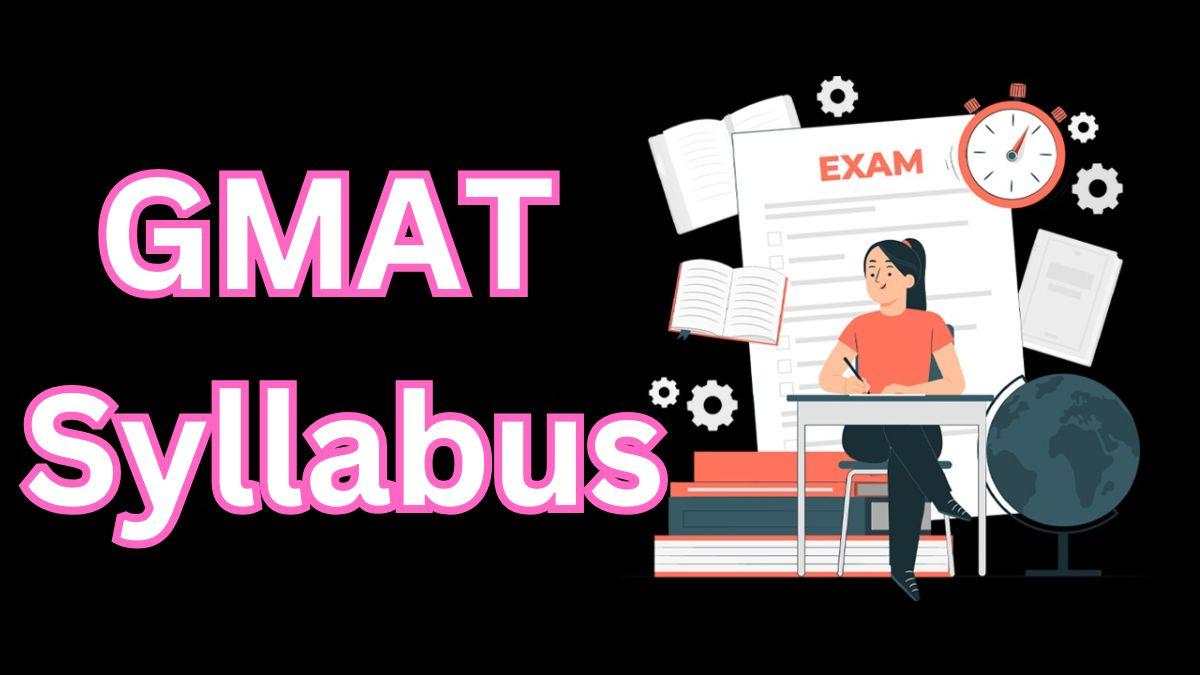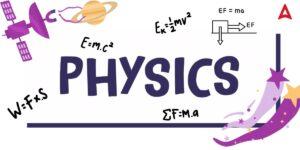Table of Contents
The GMAT exam is a well renowned exam especially when it comes to aspirants who want to pursue MBA from India or abroad. The GMAT is one of the most recognized MBA entrance exam all around the world. To excel in the GMAT exam, students need to study all the concepts covered in the GMAT syllabus diligently. The syllabus for the GMAT exam has undergone significant changes in the recent years especially after the introduction of the GMAT Focus, the new version of the GMAT exam.
GMAT Syllabus
The GMAT syllabus, now also known as the GMAT Focus syllabus, only contains the relevant topics that are required to pursue a career in management field. The GMAT 11th Edition has decreased the number of sections from four to three compared to the GMAT 10th Edition, following a recent revision of the syllabus. In addition, the GMAT syllabus excludes Geometry questions, as well as the AWA section and the Integrated Reasoning section that were part of the GMAT 10th Edition. Let’s talk about the GMAT 11th Edition syllabus, focusing on essential topics for GMAT preparation that should not be overlooked.
GMAT Focus Syllabus
The 10th edition of the GMAT exam went modifications that later came to be known as the 11th edition or GMAT Focus exam. The GMAT Focus Edition syllabus differs from the syllabus of the current GMAT exam. The AWA and SC sections have been taken out. A fresh segment named Data Insights (DI) has been introduced, incorporating IR (Integrated Reasoning) and DS (Data Sufficiency). In this article, we will take a look at the latest syllabus for the GMAT exam or the GMAT focus syllabus in detail.
GMAT Syllabus 2025
The GMAT’s updated edition, GMAT Focus Edition, was launched on November 7, 2023. The revised GMAT lasts 2 hours and 15 minutes and includes a choice to take a 10-minute break between sections. The scoring system ranges from 205 to 805 and includes three parts: Verbal Reasoning, Quantitative Reasoning, and Data Insights (new).
The syllabus is also divided into different parts of the GMAT such as Critical Reasoning and Reading Comprehension in Verbal, Problem Solving in Quant, and Data Sufficiency, Two-Part Analysis, Multi-Source Reasoning, Graphics Interpretation, & Table Analysis in Data insights.
GMAT Focus Syllabus 2025
The GMAT test is made up of four unique parts – Analytical Writing Assessment (AWA), Quantitative Reasoning (QR), Integrated Reasoning (IR), and Verbal Reasoning (VR). The QR section includes subjects like problem-solving and data sufficiency.
The VR part consists of sentence correction, reading comprehension, and critical reasoning (CR). The part of the test that focuses on interpreting information includes analyzing tables, using multiple sources, and conducting two-part analyses. Lastly, the AWA section includes a prompt for writing a descriptive essay. Check the key points about the syllabus below.
| Section Name | Syllabus Overview |
| Quantitative Reasoning (21 Questions in 45 Minutes) |
|
| Verbal Reasoning (23 Questions in 45 Minutes) |
|
| Data Insights (20 Questions in 45 Minutes) |
|
GMAT Syllabus Quantitative Reasoning
The GMAT Quantitative Reasoning course is divided into two parts: Data Sufficiency and Problem Solving. All the questions in this part are of the objective type and have multiple-choice options. The topics of mathematics covered in this section’s syllabus are diverse, including:
Problem Solving
- Arithmetic
- Algebra
- Geometry
- Probability
- Time and distance
- Ratio and proportion
Data Sufficiency
This part evaluates candidates’ ability to analyze a quantitative issue, recognize important information, and assess whether the information is adequate for solving the issue.
GMAT Focus Analytical Writing Assessment Syllabus
The AWA section of the GMAT syllabus in 2025 incorporates subjects for writing essays or passages. Applicants must respond to the question using the information in the given text. This portion includes a vast array of topics and themes as the subjects of the passage can differ greatly. The main focus is on how the response is structured and composed rather than on building arguments.
It is crucial to remember that this part is not a subjective assessment but instead a critique of writing style, so it is recommended to remain impartial towards the topic provided. The GMAT analytical writing section syllabus consists of the following topics:
Argument Essay
In this section, candidates must evaluate the rationale provided in a specific argument and formulate their own argument in return. Candidates are assessed based on how well they comprehend the provided argument.
Issue Essay
In this part, candidates are required to compose an essay regarding a specific topic. Candidates are required to share their viewpoint in a maximum of 600 words. Candidates have the freedom to either endorse or reject the provided statement. Nevertheless, it is crucial to clearly communicate their point of view in a organized way.
GMAT Syllabus for Integrated Reasoning
The GMAT Integrated Reasoning section evaluates how well test-takers can comprehend data shown in tables or graphs. The GMAT IR section questions are centered around the following topics:
Multi Source Reasoning
Multi-source reasoning encompasses data from a variety of sources like tables, text passages, graphics, or a mix of all. Candidates need to thoroughly analyze every data source in order to correctly respond to various questions on the GMAT.
Two Part Analysis
This section of the GMAT curriculum consists of questions that are either quantitative, verbal, or a mix of both. In order to improve this segment, candidates need to work on solving simultaneous equations, assessing trade-offs, and determining the connections between two entities or values.
Graphics Interpretation
This part involves analyzing and explaining data displayed using visual representations such as x/y graphs, scatter plots, pie charts, bar charts, or statistical curve distributions. Candidates need to identify connections in the given information and draw conclusions in order to answer the questions related to this topic.
Table Analysis
This subject assesses candidates’ skills in organizing and examining data that is displayed in tables. Questions that require analysis of a table assess candidates’ skill in identifying crucial data.
GMAT Syllabus for Verbal Reasoning
The Verbal reasoning section is comprised of three divisions: Reading Comprehension, Critical Reasoning, and Sentence Correction. This part assesses candidates’ abilities in understanding written information, grasping logical relationships in passages, and evaluating concepts.
Reading Comprehension
The GMAT Reading Comprehension curriculum covers short and long passages to evaluate candidates’ reading skills such as:
- Inference
- Application
- Identifying the main idea
- Supporting ideas
- Understanding logical structure
Critical Reasoning
The GMAT Critical Reasoning curriculum includes a range of argument types that assess candidates’ skills in analyzing:
- Argument structures
- Evaluate arguments
- Assess assumptions
- Formulate or evaluate action plans
- Strengthen or weaken arguments
- Complete arguments
Sentence Correction
This part assesses the candidate’s ability to create grammatically accurate sentences for clear expression of thoughts or relationships. Subjects covered in GMAT Sentence Correction include:
- Grammar rules
- Sentence structure
- Modifiers
- Parallelism
- Comparison
- Nouns
- Pronouns
- Verbs
- Idioms
GMAT Exam Pattern
Apart from the GMAT syllabus, students must also have a proper knowledge about the latest exam pattern of GMAT. With the most recent updates, this is how the GMAT Focus Edition exam pattern appears for candidates to grasp the format before starting to prepare for the GMAT exam.
| GMAT Focus Latest Exam Pattern | ||
| Sections | No. of Questions | Time Duration |
| Quantitative Reasoning (QR) | 21 Questions | 45 Minutes |
| Verbal Reasoning (VR) | 23 Questions | 45 Minutes |
| Data Insights (DI) | 20 Questions | 45 Minutes |
| Total | 64 Questions | 2 Hours + 15 Minutes (Plus an optional 10 minute break in between) |
| Related Articles | |
| CAT Syllabus | XAT Syllabus |
| NMAT Syllabus | SNAP Syllabus |





 NEET Botany Syllabus 2025 Out, Check Cha...
NEET Botany Syllabus 2025 Out, Check Cha...
 CUET Science Syllabus 2025 Out, Download...
CUET Science Syllabus 2025 Out, Download...
 CUET Physics Syllabus 2025 PDF Download ...
CUET Physics Syllabus 2025 PDF Download ...










